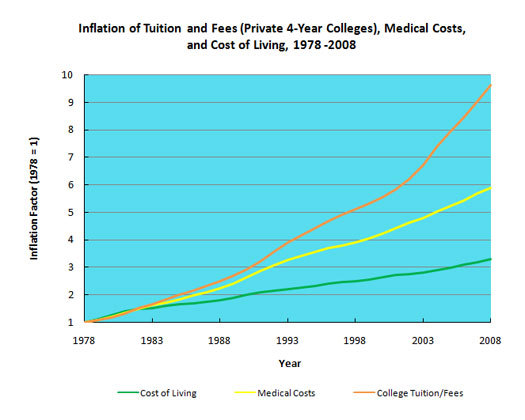
A decision by the Indian government set up four new National Institutes of Design (NIDs) in the country has sparked a lively debate about the kinds of design they should teach.
An influential group of design thought-leaders has launched a campaign called VisionFirst that calls for a "rigorous co-creation process to bring clarity to the models of design education that India should seek."
VisionFirst applauds the new institutes as “a significant step towards leveraging design to enhance the country's ability to innovate, and in using design to enhance the quality of life in the country.” But the group also expresses concern that the new institutes “will be a lost opportunity if we follow a predetermined route and end up replicating expired, limited and ineffective models of design.”
The VisionFirst group includes Uday Dandavate, co-founder of SonicRim; Ashish Deshpande, founder of Elephant Design; S. Sundar, president of the Association of Indian Designers; the writer and blogger M. P. Ranjan; and the educator Jogi Panghaal, India Associate of Doors of Perception.
In a pamphlet launched yesterday VisonFirst propose a "nationwide and rigorous co-creation process" to stimulate fresh inquiry and bring clarity to the models of design education that India should seek.
This “grand open, global conversation about design education in India” could unfold on the internet and in print media, says the group; it could conclude with a international conference to share the insights and emerging directions in design education from around the world.
“To remain competitive in the global marketplace” argues VisionPlus, “industry must respond to new sets of challenges. Users are seeking more than usefulness and usability. They are looking for emotional connectedness, commitment to green values, transparency and fair use of labour.”
The Indian government has published a Request for Proposal that invites consulting organizations to bid for finalisation of the model for setting up campuses for four new NIDs. This approach, warns VisonPlus “may exclude new and innovative ways to imagine new institutions.” The group is concerned that India's government may “commit to building infrastructure for a pre-supposed form of a school, both in building and content that is actually in desperate need for re-imagination.”
Sam Pitroda, Advisor to the Prime Minister of India on Public Information Infrastructure & Innovations, and recent chair of India's Knowledge Commission, has told VisionFirst that he supports the creation of 40 innovation clusters in different parts of India to serve different sectors of the economy, and sees a need to have a 100 NID’s in India.
The debate in India coincides with the launch by Doors of Perception of a new project called Xskool.. (Declaration of interest: This writer is director of Doors of Perception.)
The idea of Xskool is to set up a training platform that will help the next generation of design teachers and leaders "make a fundamental transition to a new kind of design — one that creates social value without destroying natural and human assets".
More on Xskool shortly.


Comments [4]
Where India needs designers most is in the development sector to 'at least' make the work of the many wonderful NGOs here more effective, to address new issues that have risen directly from India's chaotic growth and to see that the rural poor also get some share of India's pie. Public transportation, signage systems, waste management, water management, low-cost housing, road safety, clean energy, health care, environment conservation and education are areas where the role of designers in India is seriously lacking and greatly needed. The good news is that the Indian development sector has undergone a transformation in the past 10 years and realised the value of design in a big way. The need of the hour is motivated designers who are willing to sacrifice some of their income and big-brand portfolios to instead work for the greater good!
03.01.11
01:31
03.02.11
08:27
"Uh, uh, may i request all "design thinkers" here to back off...meaning, step back from the immediate issue, take a broader look to come up with a design for a more sustainable planet, please? I give here the broad measure you may like to work on: by the estimate of a certain astrophysicist, Earth is valued at 3000 trillion pounds based on age, size, temperature, mass and other vital stats...By the panic estimates of our environMENTALISTS the value is eroding at a reasonably fast pace...so, if you can come up with a new design to stem the rot - i.e. to hold the Earth's value at 3000 trillion pounds, that would be quite nice, really ! Thank you for your attention to this minor cosmic design matter ...do remember, it requires systems thinking: realizing that any problem is part of a larger whole, and that the solution is likely to require understanding the entire system...all the best ! Do feel free to use any other measure of value and/or rate of depletion and kindly pin that to your NEW EARTH solution, to enable proper evaluation...."
03.05.11
02:22
01.25.12
09:03